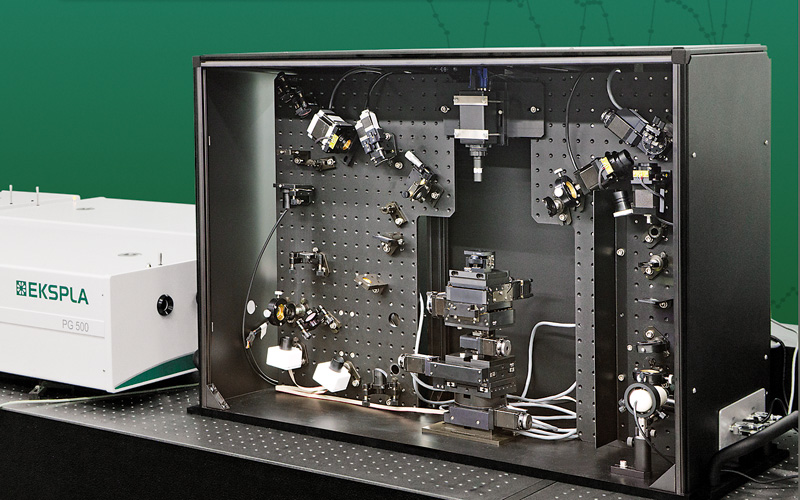
 |
Ideal laser spectroscopy tool for in-situ investigation of surfaces and interfaces. SFG spectrometer operates from4300 to 625 cm-1 and provides < 6 cm-1 spectral resolution. The heart of the system is a picosecond Nd:YAG laser generating 25 ps pulses that pump an OPG/DFG delivering from 260 to 20 µJ per pulse across the IR range |
|
进行表面和接触面研究的强有力而通用的工具
应用
- 聚合物分子结构, 聚合物混合表面与深层接触面
- 电化电池的固体/液体表面分子组织研究
- 晶体表面催化反应的分子研究
- 液体表面的分子定向研究,特别是水表面
- 金属单层的自聚合现象研究
- ... 接下来是您的
性能
- 优良的激光源稳定性,S/N率高
- 测量范围大: 625 cm-1
- 光谱分辨率高于 6 cm-1
- 性价比高
- 完全 PC 控制波长扫描
- 可升级到SHG倍频光谱测量系统
In-situ investigation
- 单层分子研究
- 端基定向
- 表面反应与催化
- 表面原子团完全定向
- 表面震动的激发与缓和
相关下载:
 关于SFG的详细资料(172.5 Kb) 关于SFG的详细资料(172.5 Kb)
关于和频光谱(SFG)的问答(中文,图)
相关链接:
浙江省大型科学仪器设备协作共用平台有关SFG设备共享信息
国家科学中心出访立陶宛EKSPLA公司 
| |

